I’m about to disappear on vacation for a couple weeks so I thought I’d leave you with a few photographs.
The July 2007 issue of Astronomy magazine due out in the next few days has an article about Brian Skiff, the LONEOS observatory, and the hunt for near earth objects. The editor contacted me for more information about this evening at Anderson Mesa when Brian offered a tour of the observatory and what he does there. I went out to the observatory in February and took some photos to submit for the article. It looks like they decided to use one of them, although I haven’t seen how they chose to present it yet.
What I wanted to do was to capture the dome lit naturally by the winter Milky Way, and capture a rich starry sky behind it. I took shots facing north, south and west. The south facing shot had the most potential, so it’s the one I put the most effort into.
Facing South: Cool Hue
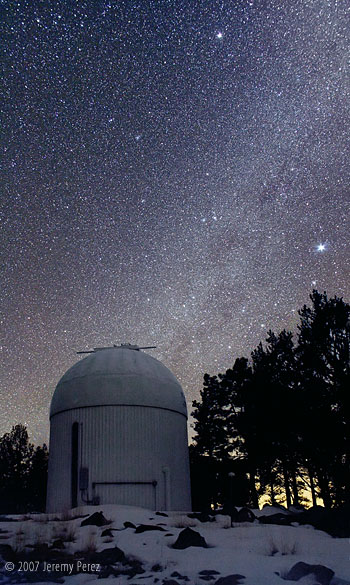

Click image for larger version (250K).
Facing South: Warm Hue
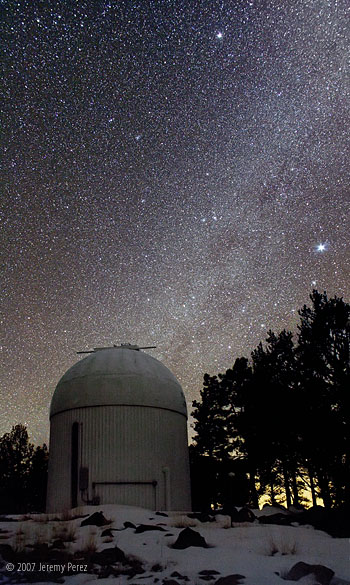
Click image for larger version (250K).
I submitted both of the above images, so I’m not sure which they used. Light pollution from Phoenix, 100 miles to the south, can be seen as a yellowish glow between the trees. If you click on either of those for a larger version, you can see several excellent open clusters scattered around the Milky Way. Sirius is to the right just above the trees, and Procyon is the second brightest star further up.
Facing West
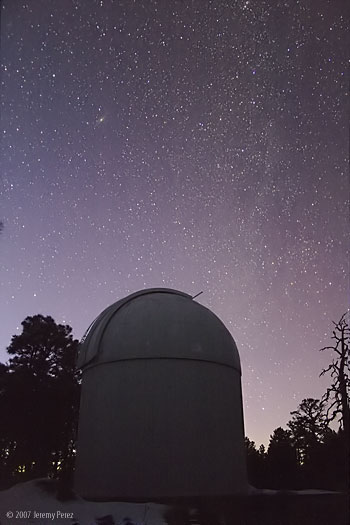
Click image for larger version (120K).
This shot above was taken during twilight, so there are some strange colors showing up that I didn’t take time to balance. The Double Cluster in Perseus can be seen at the very top, and M31 makes a prominent appearance toward the middle left.
Facing North
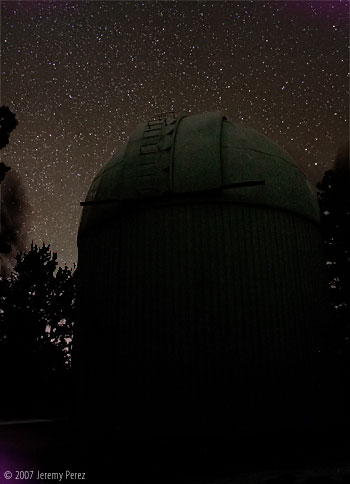
I spent even less time processing this image, and it shows in the amp glow and strong yellowish-brown hue that is still there. I think it has some potential, but it’s going to have to wait until I have some time to spend on it.
If there were a camera that could capture a bright, deep image of the sky in less than 30 seconds, I could shoot both foreground and background in one image. (Not that I could come close to affording such a camera if it existed.) So what I did was to shoot a few still images of the foreground (10 minutes per exposure), and then shoot a few equatorially tracked images from the same position to capture the stars and Milky Way (again 10 minutes per exposure). I then stacked both of those sets to average out the noise. This led to the hard part of masking the foreground over the background to generate a crisp image of both parts. Here are two photos, one from each set, to show what they looked like before processing and compositing.
10 Minute Exposure Locked on Foreground
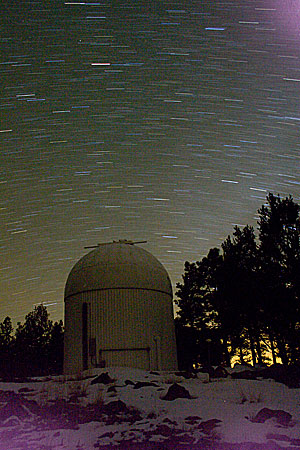
10 Minute Exposure Tracked to Sky Rotation
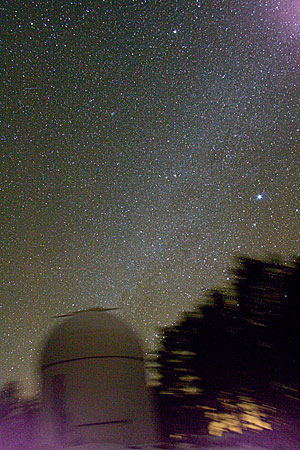
By taking the shots from the same position, and using the same exposure time for each, I was able to meet my goal of presenting a natural looking shot that contains the skyglow near the horizon, the naturally lit dome and foreground, and that is true to the overall view from that spot. There was a bunch of fiddling that went into compositing the images, and hopefully I can share a step-by-step of that at some point. I hope to gradually take shots like this at other interesting locations. It’s just very time consuming, so I’ll probably do it even less frequently than I crank out Lunar sketches. Lo siento.
Hello Jeremy –
thank you for the beautiful site – just can’t stop exploring here! Here in Germany I hardly meet people sketching astronomical objects – it is good to know about other sketchers sharing the same passion.
Wishing you all the best – fred
Fred, thanks very much for your comment. I hope you’re enjoying some good observing and sketching opportunities this summer.
Take care,
Jeremy